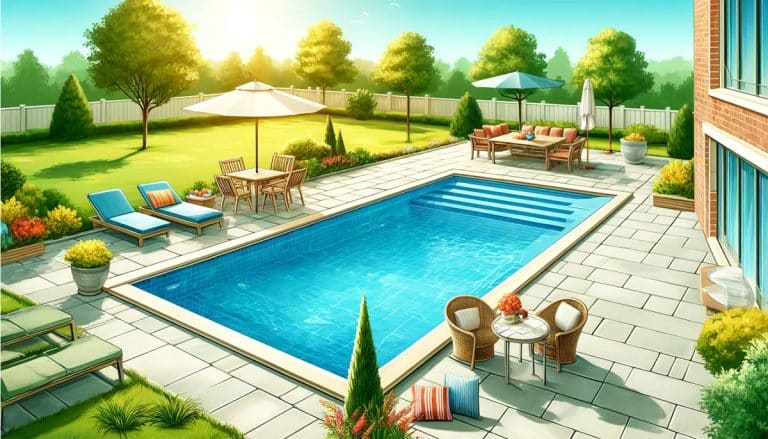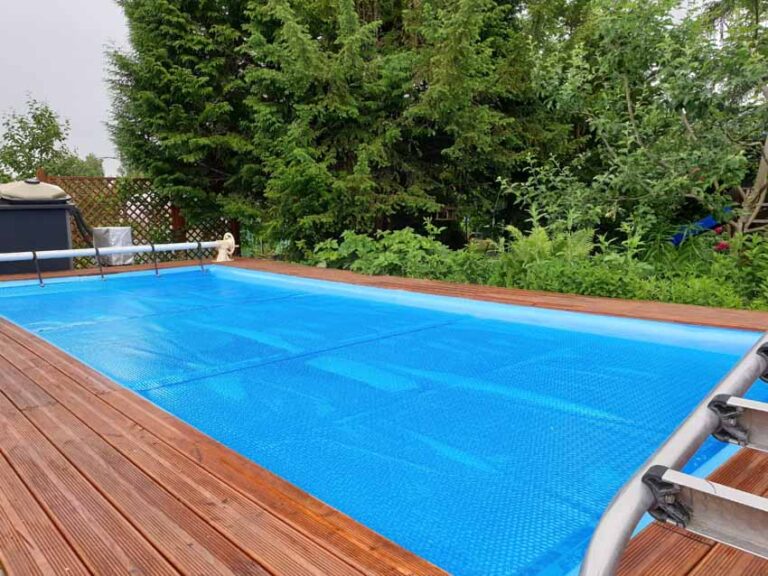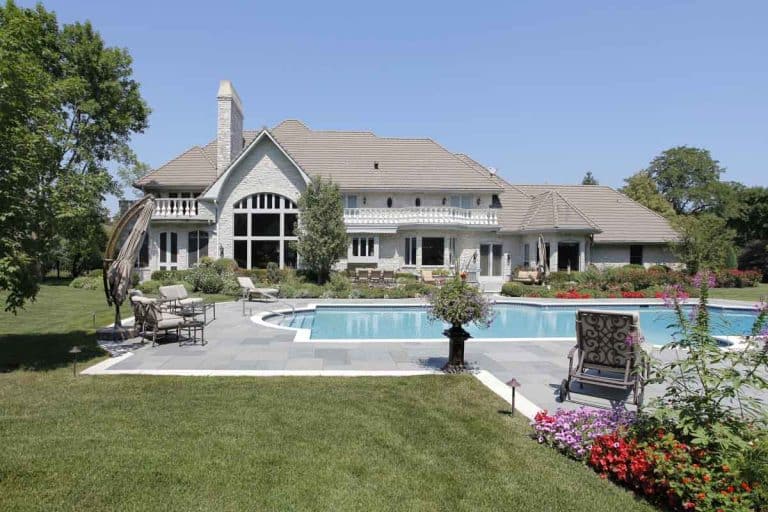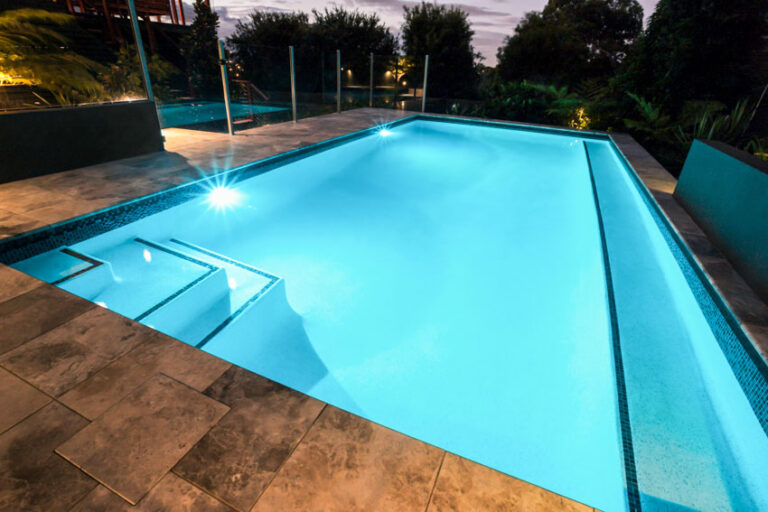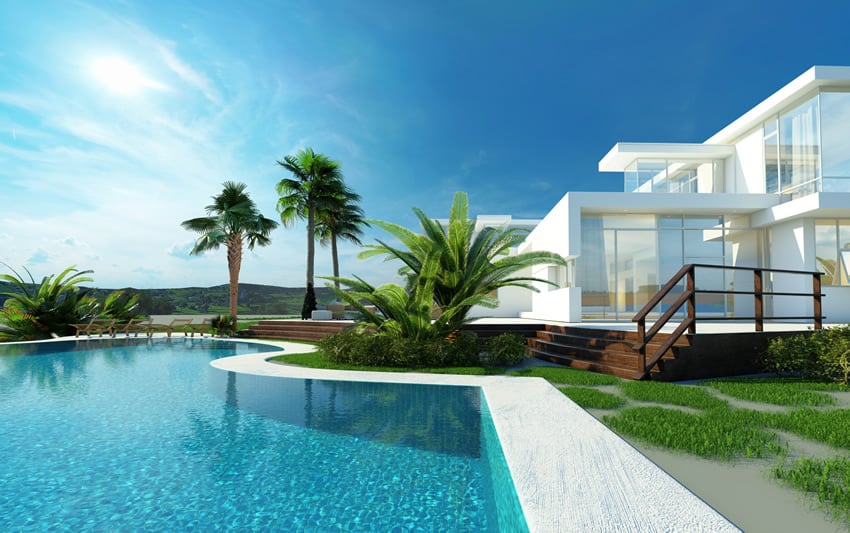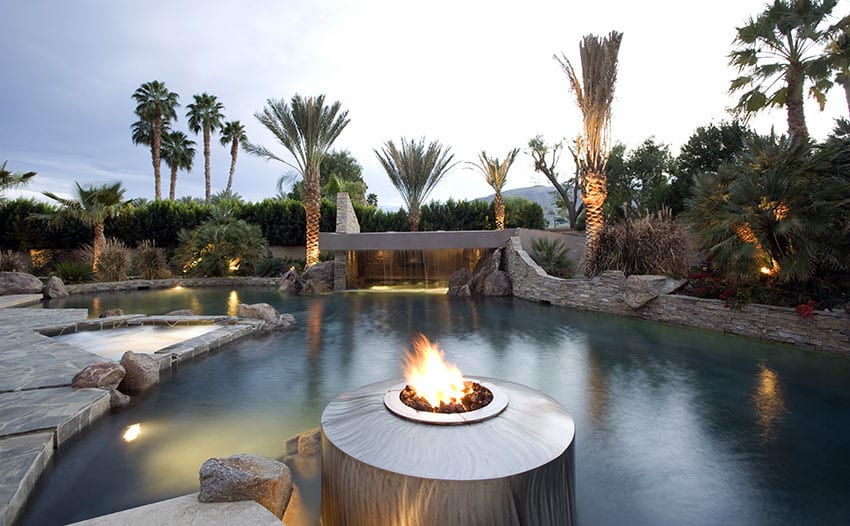What To Know Before Building A Pool Retaining Wall
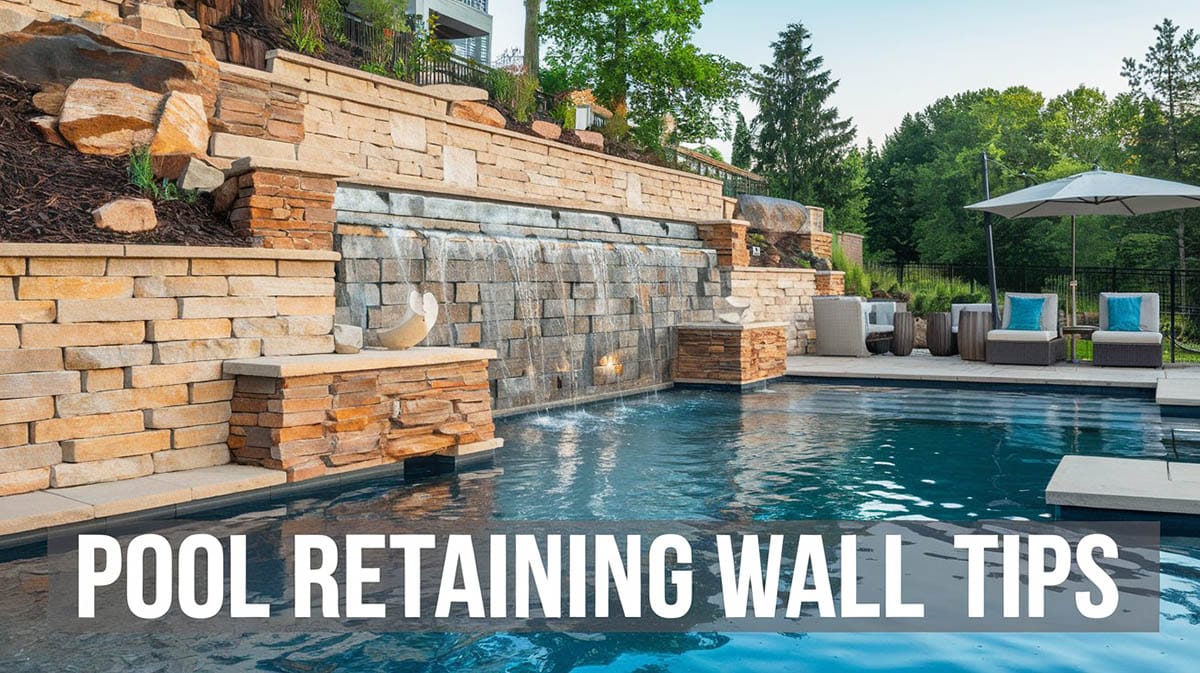
Building a swimming pool is an exciting event for homeowners. Not only does a pool provide a place to lounge outside, but it also skyrockets your property’s market value. While the end product is enjoyable, though, the process of building one can be stressful. If the subject of pool retaining walls has been brought up, you may not be sure if your landscaping design will need one.
What Is a Pool Retaining Wall
A pool retaining wall is a small wall that surrounds part of the structure. The wall serves as a barrier around the pool and housing for additional features such as water features like waterfalls. These walls can range in height dramatically, from one to several feet. Pool retaining walls can be made in any design scheme to suit your design and the layout of your yard. They can even be designed to create a bench for additional seating on the patio.
Waterfalls, jets, fountains, and planters are just some of the water feature additions that can be added to your retaining wall. Not only do these additions increase the enjoyment of your pool, they also increase the value of the property. The options are truly endless when it comes to the design of your pool retaining wall. The contractor installing your swimming area can help you decide on materials that would be best for the type of design you would like to create.
Do I Need a Reinforced Wall for My Pool?
If you have a level yard, chances are that a retaining wall is not necessary. You can choose to build one, but it is not necessary to construct pools. Whether or not you need a retaining wall for your pool depends on your yard’s level. Yards with significant slopes will likely require building a retaining wall to ensure that materials do not run down the slope onto the patio or the water.
Another reason you may need a ground retention structure is to prevent the high side of the slope from eroding. Reinforced walls serve as a hard barrier that prevents soil from falling onto the patio. This is especially helpful in areas that have particularly loose soil. Loose and sandy soil makes the chance of erosion higher, making this type of wall worth the cost. The necessity of building a supportive barrier can be discussed with the contractor overseeing your pool’s installation. They will be able to give you a final determination on whether walls are needed and how it will fit into the pool’s design overall.
Benefits of a Pool Landscaping Wall
| Benefit | Description |
|---|---|
| Structural Support | Holds back dirt to prevent erosion |
| Slope Management | Creates flat surfaces for the construction of pools |
| Erosion Prevention | Stabilizes soil to prevent wind & rain erosion |
| Space Utilization | Turns sloped areas into usable space for patio and swimming area |
| Enhanced Design | Adds to backyard visual appeal |
| Safety Barrier | Prevents accidental falls into the water |
| Water Management | Helps promote proper water drainage and prevents damage |
| Increase Property Value | Improved landscaping adds to a home’s value |
| Matching Patio Style | Offers a range of materials to fit any design aesthetic |
| Garden Enhancement | Creates usable space for gardening and landscaping |
| Wind Protection | Can be a windbreak from strong gusts |
| Privacy | Offers additional privacy when built to height |
Pool Retaining Wall Cost
All in all, the cost of a pool retaining wall can vary greatly. However, some general estimates can be made. On average, most people seeking a retaining wall will pay $3,000 to $10,000 for a partial structure or between $6,000 and $20,000 for a full wall structure with additional features.
The cost of a supportive structure is determined based on the materials used, the design, and the labor for installation. As discussed, these walls typically fall into one of two types: masonry or segmental walls. The cost of these two types varies greatly, making it a significant factor in the price overall.
Segmental walls are made from pre-cast blocks stacked without mortar. This type is more budget-friendly and can be done as a DIY project. Masonry walls, on the other hand, are made from poured concrete that is faced with stone. The cost of this type is driven up because of the stone used to face the wall.
The size and design of the wall will also play a part in the overall price. Larger stabilization walls will require more materials, making them more expensive. Larger embankments also require more effort for installation, raising the price. If you add any features to the structure, such as a waterfall, this will also raise the cost.
The final piece that factors into the price of a wall construction is installation costs. If you choose a segmental wall, you can save money by building it yourself. Conversely, a masonry wall requires professional installation in most cases, so you must hire a contractor with a backhoe.
Wall for a Pool On a Slope
Unless you live in a perfectly flat part of the world, chances are you have a sloped yard. If you want to put a pool in your yard, this slope can become a problem. There’s no need to resort to above-ground pools and miss out on all an in-ground one offers. As discussed above, supportive walls serve as a tool to ensure that the slope does not negatively impact your in-ground swimming area.
When putting a pool in a sloped yard, you have three options. You can put it primarily on the high point, low, or somewhere in the middle. Putting the pool primarily on a low point makes water and debris more likely to become a problem. Installing the pool primarily on a high point is often impossible, making it necessary to go somewhere in the middle of the slope. Your backyard layout will impact the pool shape and size you can select.
Accent walls can be used to create a pool water feature, giving it a focal point while adding character to the design. Many homeowners opt for retaining wall blocks stacked four feet or less to avoid needing permits. Check your local building codes regarding walls to determine your needs.
Above Ground Pool Wall Problems
Above-ground pools are not immune to the problems a sloped yard can cause. These designs can also experience issues associated with runoff and debris, primarily on the embankment itself. While supportive walls are not needed to prevent runoff from entering pools, they are needed to support the high end of the slope.
If a retaining wall does not support the high end of the slope, it may begin to erode over time. This can cause serious damage to the wall of your above-ground pool and can even cause structural collapse. Adding a retaining wall can prevent this while also ensuring that your above-ground pool looks finished and permanent.
For more related designs, visit our swimming pool fence ideas page.

